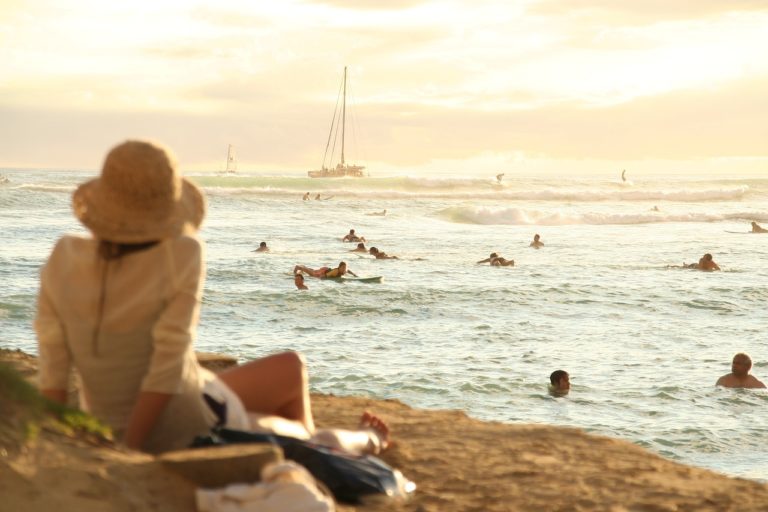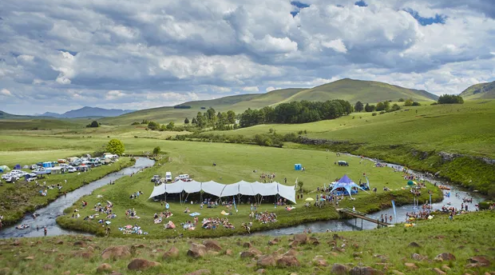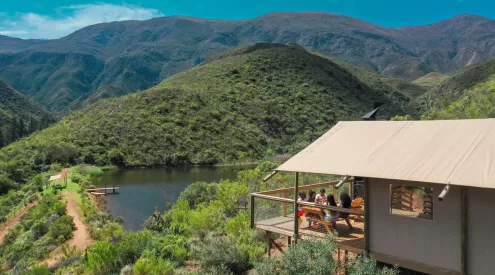The National Sea Rescue Institute (NSRI), as always, are prepared for the vacation season as beaches and inland waterways are expected to be busy.
‘With close to 1,500 NSRI volunteers stationed at 43 coastal and inland NSRI rescue stations, on duty 24 hours a day, we are ready to respond to emergencies BUT we are appealing to the public to have a safety conscious mind set in and around water,’ the NSRI said in a statement.
NSRI, lifeguards and the emergency services have world-class systems in place to respond to water-related emergencies. These systems in place are amongst the best in the world.

Make sure you have a safe and fun holiday season by reading up on these helpful tips.
The key in a water-related emergency is to get a floating object to those in difficulty as fast as possible.
If that means a lifeguard physically swimming out to help a person in distress, a rescue craft arriving on the scene, a helicopter deploying a rescue swimmer to assist the person/s in difficulty or a member of the public throwing one of the NSRI pink rescue buoys to persons in distress, the effort is to get help to those in difficulty quickly.
‘For this reason we have the NSRI pink rescue buoys strategically stationed around the coastline and on inland waters that can be thrown to a person who is drowning to help them to float while NSRI, lifeguards and emergency rescue services respond to intervene.
‘We are appealing to bathers to only swim at beaches that are protected by lifeguards,’ the NSRI added.
The role of the lifeguards is to keep the public safe at beaches. They are constantly looking out for where the rip currents are forming and they place their flags away from the rip currents in their ongoing effort to promote safety. Only swim in between the lifeguards flags.
READ: Experts discuss the science of rip currents
Unfortunately, for various reasons, people regularly swim where there are no lifeguards on duty. This may be on a beach before or after the lifeguard’s duty for the day or at a beach that does not have Lifeguards. This is when things can go wrong.
In a typical scenario, Sea Rescue gets an emergency call for a swimmer in difficulty and, when we get there, we find two or more people in danger of drowning. Tragically, sometimes we are not able to get there in time and someone drowns.
Often the person who does not survive is the Good Samaritan who went into the water to try and help a person who was in difficulty, because this happens so frequently, Sea Rescue launched the Pink Rescue Buoy project in November 2017.
These bright Pink Rescue Buoys are hung on strategically placed signs and which the NSRI hopes will remind people to take care when entering water – and not to swim if lifeguards are not on duty at that stretch of the beach.
If there is an incident and someone needs help these buoys can be thrown to the person in trouble in the water, providing them with emergency flotation. There are clear graphics on the sign which explain how to use the Rescue Buoy and most importantly, the emergency number for the closest Sea Rescue station is printed on the sign.
If anyone decides, against advice, to enter the water to try to rescue someone in trouble first call Sea Rescue and then use the Pink Rescue Buoy to provide flotation for that good Samaritan as well as for the casualty.
Here are some of the NSRI’s water safety tips:
– When you arrive at the beach, point out to all of your family members and friends where the lifeguards are on the beach. Approach the lifeguards if you need help or if you are separated from your family.
– Always make sure you have a dedicated responsible adult watching over children when they are in the water swimming or around water.
– Boaters and paddlers should ensure that when your craft is underway everyone onboard should be wearing properly fitting life jackets.
– Don’t drink alcohol when you go boating or swimming.
– Always be prepared for an emergency and have the NSRI emergency number 112 and 0870949774 programmed into your phone.
– Have a plan in place in the event of an emergency to prevent panic:
– Make sure you have emergency numbers that you may need saved in your cell phone. Dial 112 from any cell phone in any emergency.
– Or simply Google Sea Rescue or NSRI for the closest Sea Rescue station’s telephone number.
– Check the wind, weather and tides before going to the beach, fishing or boating.
– Tell someone where you are going and when you are due back, and make sure that they know your route, your intentions and who to call if you are overdue.
– When climbing on rocks or fishing from rocks – never ever turn your back on the sea and we strongly advise rock anglers to wear a lifejacket and know when spring high tide is.
– If you are paddling or if you are on a boat, before you launch, download and always use NSRI’s free SafeTrx app – http://www.nsri.org.za/safetrx
– Know how to survive rip currents. If you swim between the lifeguard flags they will make sure that you are safe and well away from rip currents. If for some reason this is not possible do not swim. Educate yourself about rip currents, there is plenty of educational material here http://www.nsri.org.za/2017/01/beware-of-rip-currents/ including videos of what rip currents look like.
– Don’t attempt a rescue yourself. Call a lifeguard or the NSRI by dialling 112 and call the NSRI Emergency Operations Centre 0870949774 from your cell phone for help. If you see someone in difficulty call a lifeguard at once or dial the nearest Sea Rescue station from your cell phone. You should put this number into your phone before you go to the beach – get the emergency numbers for NSRI here http://www.nsri.org.za/emergency-numbers/ or you can Google for the closest NSRI station emergency number. 112 is a good emergency number – for any emergency – to dial from your cell phone. After calling for help try and throw something that floats to the person in difficulty. A ball, a foam surf board and so on.
– Drowning is silent. Watch children when they are in or near water. Do not be distracted by your cell phone or social media while you are looking after children in or near water you need to focus on them and nothing else. Adults who are supervising children should not be distracted or use their cell phone. It is not possible to concentrate on children in the water and be on your phone at the same time.
-Learn how to do CPR. Have the emergency numbers saved in your phone.
– Boaters, paddlers and sailors should wear bright neon clothing when they launch onto water.
– Have your details: name, contact telephone numbers for yourself and a responsible family member stenciled on your craft.
– Boaters, paddlers and sailors should wear appropriate gear for the water temperature and weather conditions forecast by SAWS (SA Weather Service), monitor SAWS weather forecasts, wear a properly fitting life-jacket (children should be fitted into child life-jackets). Carry red distress flares and know how to use them. Carry a cellphone in a water tight plastic sleeve with NSRI RSA SafeTrx downloaded on your phone and use RSA SafeTrx. Wear a referee whistle around your neck. Stick reflective 3M tape on your craft. Make sure your craft is in a serviceable and working condition. Make sure your cellphone is properly charged and have a VHF marine radio with batteries fully charged.
– Prepare and brief everyone involved for an emergency before you launch onto water.
NSRI are appealing to everyone launching any kind of craft onto water, coastal and inland, to download and use the NSRI RSA SafeTrx free cellphone app, have responsible family members monitor your trip using SafeTrx and carry safety equipment.
NSRI’s Free App, RSA Safetrx, is available for download from the Apple App Store and Google Play Store
Features include:
An Emergency Call button which allows you to quickly make a distress call from the application
Share your real-time track with family and friends during your trip
Build and maintain your own safety prelaunch checklist
Choose and alert individual emergency contacts for each trip
Automatically initiates a search process should you not close your trip before your chosen ETA
The RSA SafeTrx App monitors your boat journey and automatically alerts Emergency Contacts should you fail to return on time.
Picture: Pixabay
















